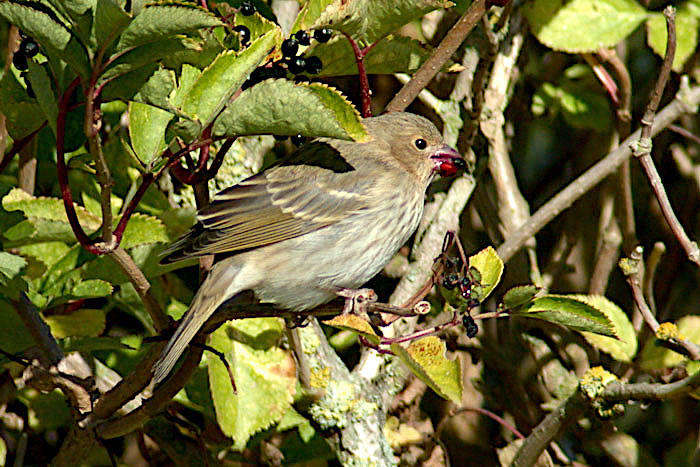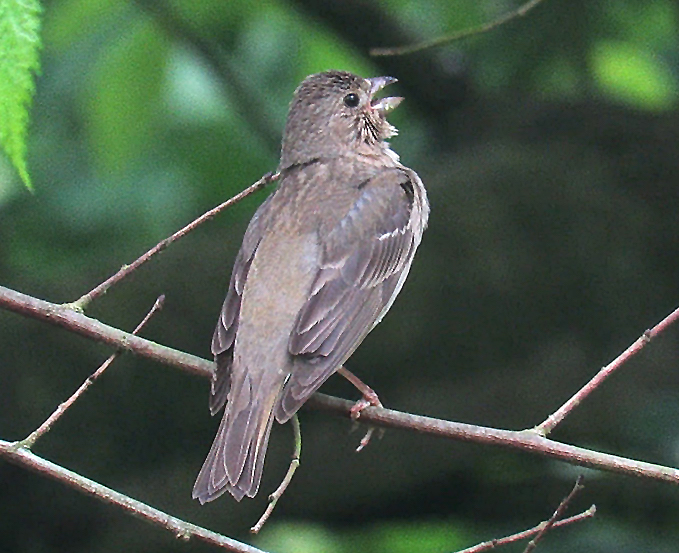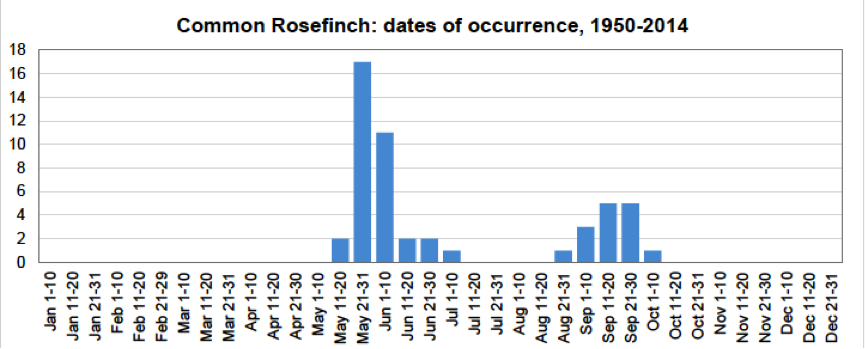Common Rosefinch Carpodacus erythrinus
Rare. North-eastern Europe.


Common Rosefinches: left, Saltfleetby-Theddlethorpe NNR October 6th 2003 (Barry Clarkson); right, Gibraltar Point June 25th 2019 (Russell Hayes).
A relatively late comer to the county with the first record being in May 1979 at Donna Nook, there have now been 54 confirmed records in all to 2019. Thirty-four have been in spring with most in May (18) and June (15). It is often difficult to decide whether birds in mid-July to early August should be treated as spring or autumn migrants, but two records, both of singing males, at Donna Nook on July 8th, 2013, and at Gibraltar Point NNR on August 2nd, 2019 are considered ‘summer’ records. Autumn records (19) span August-October with the earliest recorded on Aug 26th, but the majority have been found in September (15) with just two in October, on 2nd and 12th, both at Gibraltar Point NNR. There are no records of over-wintering birds. In most years there are 1-2 birds but three or more have occurred in seven years with most in 2010 (6) and in 2013 (13); there were 201 British records in 2013, the fourth highest ever.
The bulk of the records have come from Gibraltar Point, 38 involving around 43 individuals. The distinctive slowly rising whistle of singing males usually from within deep cover has been heard on at least 17 occasions there late May to early June and is clearly the best time to pick one up. The sparrow-like juveniles in the autumn are harder to find and clearly may be overlooked within large autumn flocks of Linnets and other finches.

Finder’s report: Scarlet Rosefinch at Donna Nook, May 21st, 1979, first county record.
by S. Lorand.
Note: account taken from the original BBRC submission. In this era, Scarlet Rosefinch was the popular name, but the species is now known as Common Rosefinch. There were 43 records in 1979, with fifteen in spring being the most ever at that season, while the autumn produced an average series.
Circumstances
At about 08.00 hr I saw a small sparrow-sized bird perched on top of a young Sea Buckthorn bush on the edge of the sand dunes. Initially I was about 100 yds away, but eventually managed to approach it to within 50 yards, from where I was able to observe the bird as it sat there quite unperturbed by my presence. First impressions meant very little as its most notable feature was its undistinguished appearance. However, over a period of 2-3 minutes, I was to become convinced that it could only be a Scarlet Rosefinch.
Description
Its size was judged to be about that of a House Sparrow, although it was much dumpier than that species, with a larger head and neckless appearance. In some respects, it resembled a small Corn Bunting, but was less rotund, though it possessed the same indolent expression.
The wing tips projected slightly beyond the base of the medium length tail. Upperparts were olive-brown, fairly uniform, and sparsely streaked darker; the crown was slightly darker. Double wing bars were formed by pale, narrow tips to the greater and median coverts, while the tertials and secondaries were edged white. The breast was pale buffish grading to off white on the belly. Fine dark streaking was restricted to the upper breast with a continuation down the sides along the flanks. The eye was dark, and the conical bill appeared pale and much heavier-looking than House Sparrow. The legs and feet remained hidden in the vegetation.
Eventually the bird flew in gentle undulations across to some dead Elders. As it took off, it called a soft and pleasant ‘dwee-eek’. It remained on an Elder for only a few seconds before leaving high to the south.
Reference
Rogers, M., J., and the Rarities Committee (1980). Report on rare birds in Great Britain in 1979. British Birds 73 (11): 491-534.
Account as per new Birds of Lincolnshire (2021), included December 2022)

